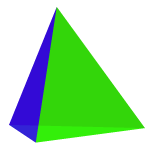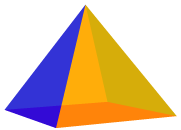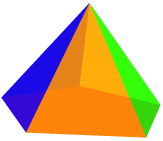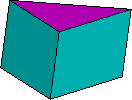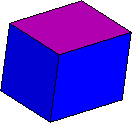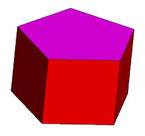

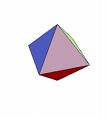
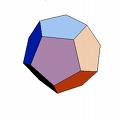
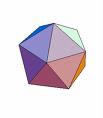
Math 100. Exploring Mathematics.
Project 3: Polygons and Polyhedra
1. Determine the number of vertices, the number of edges, and the number of faces (sides) of each of the following solids. Let V, E, and F denote these numbers, respectively. Calculate V-E+F for each solid. This number is called the Euler Characteristic. What do you notice? (We will discuss your results in class.)
| Solid | Vertices | Edges | Faces | V-E+F |
| tetrahedron, triangular pyramid | ||||
| cube, square prism, rectangular prism | ||||
| octahedron | ||||
| dodecahedron | ||||
| icosahedron | ||||
| square pyramid, rectangular pyramid | ||||
| pentagonal pyramid | ||||
| hexagonal pyramid | ||||
| pentagonal prism | ||||
| hexagonal prism |
2. Choose one of the following.
A. Explain the result in part 1. Why do you get that number for V-E+F?
B. Make models (e.g. paper or cardboard, or use any other material) of the five Platonic solids. All five models that your group makes must be made of
the same material and have the same style.
C. Write a paper explaining why there are only 5 Platonic solids.
D. Make a calendar on a dodecahedron (one month on each face).
E. Find and create an origami project with polyhedra-like shapes.
F. Find (and print out) pictures and/or descriptions of polygons and/or polyhedra found in nature and/or art.
G. Create a piece of art using polygons and/or polyhedra.
H. Think of any other project related to polygons and/or polyhedra (e.g. that you might be able to do with elementary school children).
Platonic solids. A Platonic solid is one whose all sides are congruent (equal) regular polygons and the same number of faces (sides) meet at
each vertex. There are five Platonic solids, they are shown below. See also Wikipedia for animated graphics.





